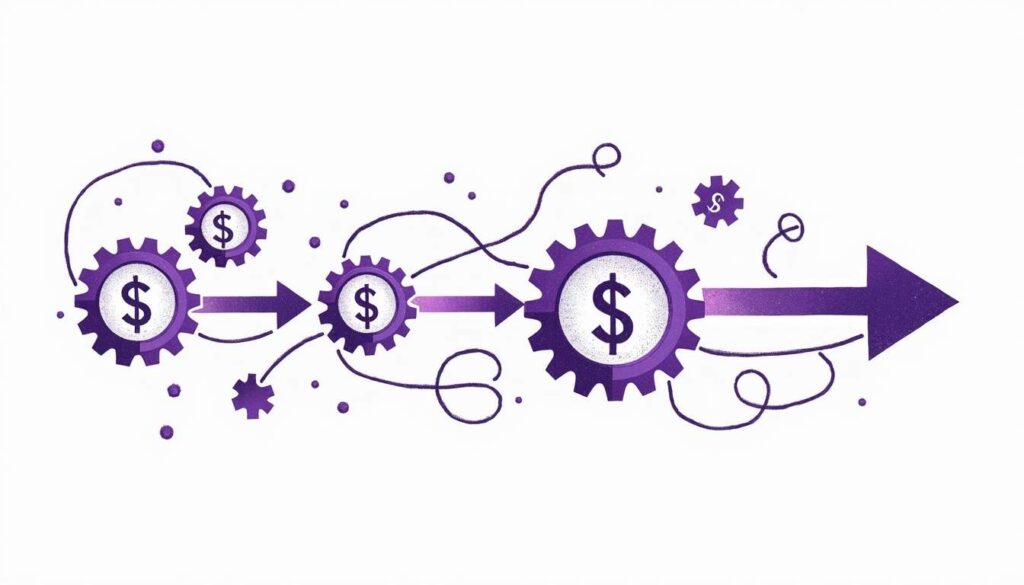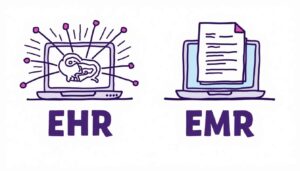Maximizing Efficiency: The Benefits of Revenue Cycle Outsourcing
10 Oct 2025 By: Vlade Legaspi
Updated

In today’s busy healthcare world, keeping the financial health of medical practices strong has grown complex. Rising costs, new rules, and tough insurance claims push providers to find smarter ways to manage revenue. One answer gaining attention is revenue cycle outsourcing. This lets healthcare providers hand off revenue tasks to expert partners, freeing them to focus on patients and boost financial results.
This article covers the key benefits of revenue cycle outsourcing, using data and real examples. It shows how outsourcing cuts errors, raises efficiency, and improves cash flow, helping healthcare groups grow and stay strong.
Understanding Revenue Cycle Outsourcing

What is Revenue Cycle Management?
Revenue Cycle Management (RCM) includes all tasks that capture, manage, and collect patient service revenue. This covers registration, insurance checks, coding, billing, claims, payments, and denial handling. It is vital because it shapes the financial stability of healthcare providers.
However, RCM is complex. A 2023 HFMA report shows over 30% of claims face denial first due to errors or missing data, causing delays and higher costs. Managing this process well needs skill and advanced tech. As healthcare rules change often, providers must train teams and update systems to stay compliant. Many are now seeing the benefits of revenue cycle outsourcing, which helps cut errors, boost efficiency, and strengthen financial results.
RCM also affects patient satisfaction. A smooth revenue cycle builds trust through clear, correct billing and faster answers. Happy patients return and refer others. Knowing the benefits of revenue cycle outsourcing helps providers improve both financial results and patient care.
What Does Outsourcing Entail?
Revenue cycle outsourcing means working with third-party experts who handle parts of the revenue cycle. These vendors know billing rules, payer needs, and use top software tools. Providers can outsource some or all RCM tasks based on their goals and capacity.
Outsourcing can include single tasks like coding or claims or full revenue cycle management. The aim is to use vendor skill and tech to cut errors, speed payments, and boost finances. By outsourcing, providers free staff to focus on patient care and core work. This move builds efficiency and sparks innovation, helping providers grow new services and improve care.
The choice of partner shapes success. Providers should weigh the vendor’s history, tech tools, and support. A strong bond improves claims and outcomes, while a poor choice adds problems. Doing full research and keeping open talks helps providers gain the full benefits of revenue cycle outsourcing.
Key Benefits of Revenue Cycle Outsourcing

1. Enhanced Financial Performance and Cash Flow
One of the key benefits of revenue cycle outsourcing is stronger cash flow. Skilled vendors use proven methods to cut claim denials and speed up payments. A 2024 Black Book Market Research survey found that providers who outsource see a 15–20% rise in net collections in the first year.
By cutting the time between service and payment, providers can steady their revenue and control costs better. Outsourcing partners use analytics to spot trends and improve billing, raising financial results. These tools also reveal patient patterns and payment habits, helping providers adjust services and plans. This approach not only boosts satisfaction but also builds loyalty. All these gains highlight the key benefits of revenue cycle outsourcing for healthcare providers.
2. Reduced Administrative Burden and Operational Costs
Managing revenue cycle tasks in-house needs time, money, and skilled staff. Teams must train, buy software, and follow new rules. Outsourcing shifts these duties to experts, letting staff focus on patient care and key goals.
Outsourcing also cuts costs. A study by the Advisory Board Company found healthcare groups lower admin costs by up to 25% after outsourcing. Savings come from skipping costly tech updates and reducing staff changes. It also offers easy scaling as demand grows. These gains clearly show the benefits of revenue cycle outsourcing for cost control and efficiency.
3. Access to Advanced Technology and Expertise
Revenue cycle vendors invest in advanced tech like AI, machine learning, and automation. These tools boost coding accuracy, speed claims, and improve denial handling. AI systems catch billing errors before submission, cutting rejection rates sharply.
Outsourcing partners also hire certified coders and compliance experts who track new rules and payer updates. Their skill ensures clean, compliant claims and fewer audits or penalties. Providers gain from this deep knowledge and stay ahead in a changing field. Such expertise and tech show the major benefits of revenue cycle outsourcing for accuracy, compliance, and efficiency.
4. Improved Patient Experience
Though often seen as a back-office task, revenue cycle management strongly affects patient satisfaction. Clear billing and honest talks about costs cut confusion and stress. Outsourcing vendors offer easy billing portals and support that help patients understand payments.
A 2023 MGMA study found that better billing clarity reduced patient complaints by 30%. This boosted loyalty and faster payments. Flexible payment options and open communication also build trust and strengthen provider reputation. These gains highlight key benefits of revenue cycle outsourcing, linking smooth billing with better care and stronger patient ties.
Challenges and Considerations in Revenue Cycle Outsourcing

Choosing the Right Partner
Not all outsourcing vendors offer the same value. Choose partners with strong skills, right tools, solid compliance, and great support.
Check reviews, data safety steps, and how they follow rules. Clear updates build trust. Make sure they can grow as your needs change.
Test with a trial or pilot project. It helps you see if they work well and match your company’s style.
Data Security and Compliance
Protecting patient and financial data needs strong security steps. Vendors must follow HIPAA rules and use tight cybersecurity to stop breaches.
Contracts should list who owns data, privacy duties, and how to report breaches. Run regular checks to lower risks and spot weak spots.
Make sure vendors have backup plans for system crashes or hacks. Keep their teams trained on rules and safety steps to boost care and alertness.
Maintaining Control and Visibility
Outsourcing shifts tasks, but providers must still track revenue cycle work. Set clear goals and reporting plans to keep vendors on target.
Use dashboards to watch claims, denials, and payments in real time. Keep a strong, open relationship to fix problems fast and improve results.
Keep some in-house experts to guide vendors and spot money impacts. Hold regular meetings to align goals and tackle new issues early.
Use AI tools to study data and spot trends. This hands-on approach boosts results and builds a stronger, more effective vendor partnership.
Real-World Examples of Revenue Cycle Outsourcing Success

Case Study: A Mid-Sized Hospital’s Transformation
A 250-bed Midwest hospital struggled with slow payments and high denials. This hurt cash flow and strained its budget.
After outsourcing revenue tasks, collections rose 22% in a year. Denials dropped by 40%, easing financial pressure.
The vendor used AI tools to fix billing and trained staff to improve records. This freed the finance team to plan for growth.
Regular audits kept the hospital in line with rules. This proactive model cut billing risks and pushed steady improvements.
Case Study: Specialty Clinic Boosts Efficiency
A small dermatology clinic struggled with billing and insurance tasks. Long delays and confusion hurt patient trust and slowed cash flow.
Outsourcing cut the billing cycle from 45 to 20 days. Patient satisfaction rose thanks to clear billing and faster service.
The vendor set up a portal for easy bill pay, reminders, and payment plans. This helped patients and boosted clinic income.
Detailed reports showed patient trends and habits. The clinic used this to improve services, grow reach, and keep more patients.
Future Trends in Revenue Cycle Outsourcing

Increasing Role of Artificial Intelligence and Automation
AI and automation will soon drive revenue cycle work. Tools will spot denials early and bots will handle tasks like claims and payments.
This will cut costs and speed up results, making outsourcing more appealing to healthcare providers.
Machine learning will study old data to boost accuracy and spot payment trends. This sharpens decisions and reduces admin work.
With better tools, providers can shift focus to patient care. Tech will power smarter, faster, and more efficient billing systems.
Integration with Value-Based Care Models
Value-based care ties pay to patient outcomes. Revenue cycle vendors now help manage these complex payment models.
This shift makes outsourcing a key tool to stay financially strong. Vendors must give clear reports and useful data to show value.
These tools help track care quality and spot weak areas. They also guide improvements in both patient care and operations.
As rules grow, strong vendor support helps meet goals and boost results. This builds a smarter, more efficient care system.
Focus on Patient Engagement and Transparency
Future outsourcing will focus on patient tools like custom billing messages and financial help. Clear support boosts trust and loyalty.
As costs shift to patients, easy-to-use billing systems are key. Vendors who lead here will help providers stand out.
Digital tools will let patients check bills, learn costs, and make smart care choices. This builds stronger, lasting bonds.
Patient-focused care will drive better results and growth. Strong engagement will be vital to future revenue cycle success.
Trending Now!
In 2025, more South Carolina healthcare providers are outsourcing medical billing to cut costs, reduce admin stress, and speed up payments. This trend helps clinics focus on care while experts handle billing complexities like coding, compliance, and insurance claims. Drivers of this shift include rising regulatory pressure, staff shortages, and the growth of digital care. Practices benefit from improved accuracy, faster reimbursements, lower overhead, and better risk management.
Local billing firms add extra value by understanding South Carolina’s payer rules and Medicaid systems. This helps resolve claim issues faster, especially for rural clinics. As tech tools like AI and EHR systems evolve, outsourcing will grow even more useful. Medical practices that choose billing partners now gain an edge in efficiency, compliance, and patient satisfaction—setting them up for long-term success in a fast-changing healthcare world.
Conclusion
Revenue cycle outsourcing helps providers boost speed, cut costs, and improve cash flow. Experts and smart tools ease complex billing work.
To succeed, pick the right partner, watch results closely, and protect patient data. Rules and risks demand strong oversight.
Outsourcing fits best when matched to your goals and needs. Weigh gains like growth, savings, and smoother care delivery.
Done right, it lifts performance, builds trust, and supports long-term success in a tough healthcare market.
Looking to streamline your billing and boost revenue? Join HelpSquad Health today. Our experts handle the hard stuff so you can focus on patient care.


